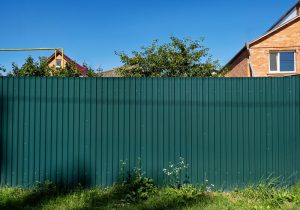What Are the Key Steps in Water Damage Restoration You Should Know?
Water damage can wreak havoc on your property, causing structural issues and promoting harmful mold growth. Understanding the critical steps in water damage restoration is crucial for minimizing the impact and ensuring a safe and effective recovery process. Each phase is vital, from initial assessment to complete restoration, and requires specific actions to guarantee thorough remediation.
Water damage restoration is a critical process involving a series of steps to address the damage caused by water intrusion, ensuring the property’s safety, structural integrity, and livability. Knowing the critical steps in water damage restoration can help you understand the importance of professional intervention and what to expect. Here’s a detailed breakdown of the essential steps:
1. Emergency Response and Assessment
-
Immediate Response: The first step in water damage restoration is to respond immediately to the emergency. Water damage can escalate quickly, causing more extensive damage and increasing restoration costs if not addressed promptly. Most professional restoration companies offer 24/7 emergency services to mitigate the damage immediately and help you restore your house after flood incidents.
-
Damage Assessment and Inspection: The restoration team thoroughly assesses the affected areas once on-site. They evaluate the extent of the water damage, identify the source of the water intrusion, and categorize the water contamination (clean water, grey water, or black water). This assessment is crucial for developing an effective restoration plan.
2. Water Removal and Extraction
-
Water Extraction: The next step is to remove the standing water using powerful pumps and vacuums. Quick and efficient water extraction is essential to prevent further damage and reduce the risk of mold growth. Professional restoration teams use industrial-grade equipment to remove large volumes of water quickly.
-
Salvageable Items: The restoration team identifies and moves salvageable items to dry areas during water extraction. They assess which items can be restored and which need to be discarded. Personal belongings, furniture, and essential documents are carefully handled to minimize damage.
3. Mold Remediation (If Necessary)
-
Mold Inspection and Removal: If mold growth is detected, mold remediation is essential to restoration. This involves identifying all mold-affected areas, containing the mold to prevent spread, and using specialized techniques to remove mold colonies. A mold removal company in Tacoma, WA, ensures that the mold is completely eradicated and takes steps to prevent future growth.
4. Cleaning and Sanitizing
-
Cleaning and Disinfection: Once the area is dry, cleaning and sanitizing begin. This involves using specialized cleaning solutions to disinfect surfaces and prevent microbial growth. Carpets, upholstery, and other porous materials are thoroughly cleaned to remove contaminants.
-
Odor Removal: Water damage can cause unpleasant odors due to bacteria and mold growth. Restoration professionals use air scrubbers and fogging equipment to neutralize and eliminate odors, ensuring a fresh and clean indoor environment.
5. Drying and Dehumidification
-
Drying the Structure: After removing the standing water, the focus shifts to drying the structure. This involves using high-powered air movers and fans to circulate air and speed up drying. Proper drying prevents secondary damage, such as warping, swelling, and mold growth.
-
Dehumidification: Dehumidifiers remove excess moisture from the air, ensuring the humidity levels return to normal. This step is critical to prevent mold spores from taking root and growing. The restoration team continuously monitors moisture levels to ensure thorough drying.
6. Restoration and Repairs
-
Structural Repairs: Once cleaning and mold remediation are complete, the next step is to restore your property. This can include minor repairs like replacing drywall and insulation or more extensive reconstruction efforts like rebuilding entire rooms or sections of the property.
-
Restoration of Personal Items: Personal belongings damaged by water are cleaned, dried, and restored if possible. This includes furniture, electronics, clothing, and essential documents. Restoration professionals use various techniques to salvage and restore as many items as possible.
7. Final Inspection and Completion
-
Final Assessment: The final step involves a thorough inspection to ensure that all areas affected by water damage have been adequately restored. This includes checking for any remaining moisture, ensuring structural integrity, and verifying that all repairs meet industry standards.
-
Client Walkthrough: The restoration team conducts a walkthrough with the property owner to explain the work done, answer any questions, and ensure satisfaction with the results. This step ensures that the property owner is fully informed and confident that their home or business has been restored to a safe and livable condition.
Wrapping Up
Water damage restoration involves a comprehensive series of steps designed to mitigate damage, ensure safety, and restore properties to their pre-damage condition. The process starts with an immediate response and assessment, followed by water removal, drying, and dehumidification. Thorough cleaning and sanitizing, mold remediation if necessary, and structural repairs are also critical components. The final inspection and client walkthrough ensure complete satisfaction and safety. Understanding these steps highlights the importance of professional restoration services in effectively managing water damage and protecting your property and health.


